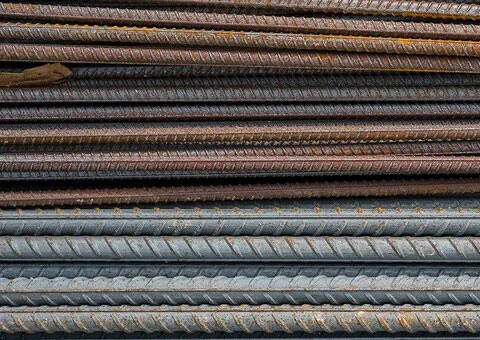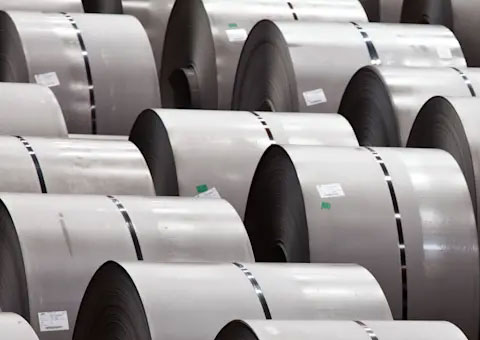In October 2025, the global rebar market is showing contradictory dynamics. Despite mostly stable commodity prices, weak demand and uneven activity in the construction sector remain the main constraints.
In Turkey and partly in Italy, producers managed to raise prices slightly, while in the US and China, prices declined due to limited construction and inventory build-up. The markets remain sensitive to fluctuations in demand, and the November forecast assumes that prices will remain near current levels.
Turkey
Prices for rebar in Turkey showed slight growth in October 2025, continuing the trend seen in September. Between September 26 and October 24, prices rose by 1.7% to $547.5/t FOB, while in September they rose by 0.2% month-on-month to $538.6/t FOB. Offers are now at their highest level since the end of May.
October was marked by a gradual increase in quotations amid rising scrap prices, but demand remained sluggish in both domestic and foreign markets. Turkish steel mills tried to pass on the increase in raw material costs to the prices of finished products, but most buyers resisted even minimal increases.
The main export destinations remained the Balkans, Africa, Georgia, and Northern Cyprus, but sales volumes were insignificant. European demand was limited due to the exhaustion of October quotas and uncertainty surrounding CBAM, while Middle Eastern markets suffered from port congestion and shipment delays.
The domestic market also showed no signs of recovery – even after the Central Bank cut its discount rate, demand did not increase due to buyers’ financial constraints and high inventory levels. Despite optimism about a potential recovery in construction following the truce between Israel and Hamas, the immediate market outlook remains subdued.
Prices are expected to remain close to current levels in November. High scrap prices and weak demand will prevent Turkish producers from significantly raising their quotations, but the likelihood of a downward correction will increase in the absence of external stimuli, primarily from China.
EU
In the EU, rebar prices showed mixed trends in October. In Italy, offers rose by 1% between September 26 and October 24, to €520/t Ex-works, although there was an 8% month-on-month decline in September. In Northern Europe, prices continued their September decline, falling by 0.8% (September 26–October 24) to €605/t Ex-works, the lowest level since November 2023.
The EU rebar market remains weak and volatile in the fall. In Italy, producers tried to halt the prolonged decline by announcing increases of €20–30/t, but most buyers limited themselves to minimal purchases, awaiting a correction. Demand was supported only by infrastructure projects, while private construction remained stagnant.
In northern Europe, the situation was even more pessimistic — low consumption, competition from cheap imports, and excess inventories held back any attempts at growth. The French market was also characterized by low margins, high costs, and internal competition between local and Spanish-Italian suppliers.
By the end of October, some Italian mills recorded a local increase, citing stabilisation of scrap prices and a reduction in supply. At the same time, prices in Northern Europe remained under pressure. Weak dynamics are expected to continue in November – local attempts to raise quotations are possible only in Italy, while the rest of the regions are likely to continue to hover around annual lows.
United States
In October, rebar lost 0.6% in price on the US market, as in September, settling at $970.03/t, while at the beginning of the month, prices fell to $959/t.
September-October on the US rebar market is being influenced by conflicting factors. Despite weak demand, domestic supplies remained limited due to production disruptions and repairs at mini-mills. This prevented prices from falling significantly. Suppliers are generally adhering to price discipline, and the shortage of certain types of products is forcing buyers to turn to imports, whose prices have risen due to low availability.
The market was supported by infrastructure projects, data center construction, and renewable energy, while the private sector showed weak activity. Scrap prices fell by $10–20/t but remained stable in mid-October, easing pressure on rebar prices.
Relative stability is expected in November, with supply remaining limited and new production capacity, notably Nucor Lexington and Hybar Osceola, only beginning to impact the market in 2026.
China
In China, rebar prices have fallen by 2.2% since the beginning of the month to $430.91/t, following a 0.2% decline in September.
In the first two months of autumn, the Chinese rebar market has been under pressure from weak demand and high raw material costs. After a brief upturn ahead of the Golden Week holiday, activity fell sharply as most consumers finished replenishing their stocks and the holiday period led to a build-up of products in warehouses.
After the holidays, the market did not show the expected recovery. Construction activity remained uneven due to rains and project delays, while ore and coke prices kept costs high. This forced a number of steelmakers to cut back or shift production from rebar to more marginal products.
A slight improvement in the second half of October was linked to expectations of government stimulus, but the lack of real decisions quickly dampened optimism. Inventories remain high and cash flows at steel mills are limited. In November, prices are expected to fluctuate within a narrow range with a downward trend, unless the government supports the market with new infrastructure measures.
Courtesy : https://gmk.center/

